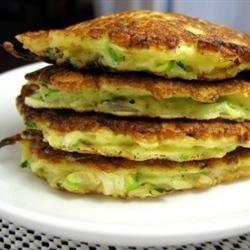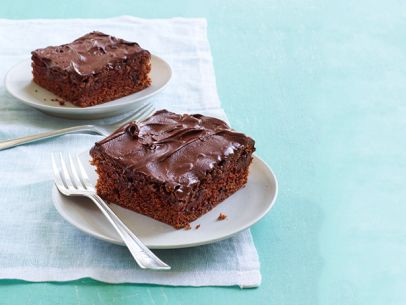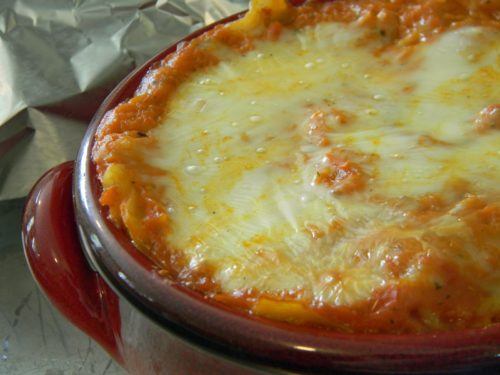The Center for Disease Control states that child obesity rates have more than doubled in the past 30 years in the United States and that the percentage of children age six to eleven years who are obese increased from seven percent in 1980 to nearly eighteen percent in 2012. Obese youth are more likely to have risk factors for cardiovascular disease such as high cholesterol or high blood pressure. A 2007 study published in the Journal of Pediatrics noted that in a population-based sample of five- to seventeen-year-olds, 70 percent of obese youth had at least one risk factor for cardiovascular disease. Now that the depressing stuff is out of the way, let’s get on to the fun stuff, shall we? If you really want your kids to eat those veggies, you must do what all good parents do: lie to your kids. Here are some tasty recipes designed to trick your kids (and some adults) into eating their vegetables. Note that I do not represent any of the websites or advertisers for the recipes pages below. Nor am I a certified nutritionist. I’m someone who thinks nutrition is important and thinks it’s a good idea for kids (and grown-ups) to eat their veggies.
Beet Pancakes Beets are very good for you. They are high in vitamin C and fiber and are chock-full of essential nutrients like B vitamins, iron, manganese, copper, magnesium, and potassium. One of my friends introduced these to her daughter (and husband) as “Pink Princess Pancakes”. Verdict? Pink Princess Pancakes were a hit. Beets are not normally at the top of the yummy chart for most kids (or adults), but these make a great breakfast option.
Beet Ice Cream Yes, beet ice cream. You wouldn’t think that the combination works, but it does. This recipe calls for cayenne pepper if you want a little kick, but it can always be omitted. Play around with it. Adding a few dark chocolate chips doesn’t hurt either!
Zucchini Pancakes Zucchini is a great vegetable to add to dishes. Shredded zucchini doesn’t have an overpowering taste and it contains all kinds of nutrients such as vitamin A, magnesium, folate, potassium, and a high content of omega-3 fatty acids, zinc, niacin, and protein. Another good thing is that it is easy to hide. Pancakes are just one example.
Chocolate Zucchini Cake This is probably one of my favorites. It is a great dessert and if you don’t tell your kids (or pretty much any adult) it’s in there, the zucchini is pretty hard to differentiate from the awesomeness of the chocolate.
Quinoa, Black Bean and Corn Salad This recipe wasn’t just made for kids; it was made by a kid. Eleven-year-old Haile Thomas created this dish which earned her a trip to the first Kids State Dinner at the White House. Quinoa is very rich in protein and fiber and is one of the few plant foods that contain all nine essential amino acids. Black beans are very fibrous and contain potassium, folate, and vitamin B6 and have been shown to be good for the health of our digestive tract- particularly the colon.
Hush Hush Lasagna This one contains four beneficial veggies: carrots, zucchini, peppers, and onions. Carrots are very rich in vitamin A with good doses of biotin and vitamin K. Peppers are good sources of vitamin A, vitamin C, and vitamin B6. Onions have vitamin C and chromium which help in regulating blood sugar.
White and Green Pizza Popeye ate spinach for a reason. It is really good for you. It is rich in iron and is also an excellent source of vitamin K, vitamin A, vitamin C, and folic acid as well as being a good source of manganese, magnesium, iron, and vitamin B2. What kid doesn’t love pizza?
Four-Cheese Pasta Bake Sticking with the spinach theme, this dish puts three cups of that green goodness into a meal.
Sweet Potato French Toast Sweet potatoes pack a powerful vitamin A punch. They are also full of vitamin B6 and C. Here is a breakfast recipe to hide them in plain sight. When is the last time you turned down French toast for breakfast?
Chocolate Avocado Pudding Does your kid like pudding? Of course! This is a great way to hide something green in desserts. Avocados contain healthy monounsaturated fatty acids and have more potassium than bananas! Since most people don’t get their recommended daily requirements of potassium, this is a great way to keep that dessert on the menu while also staying healthy. Featured photo credit: Jordan Strickler via agrimediaonline.com









